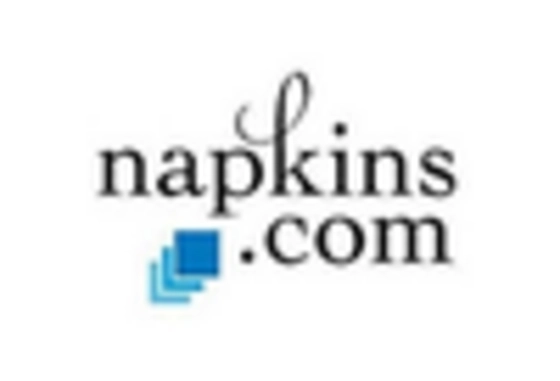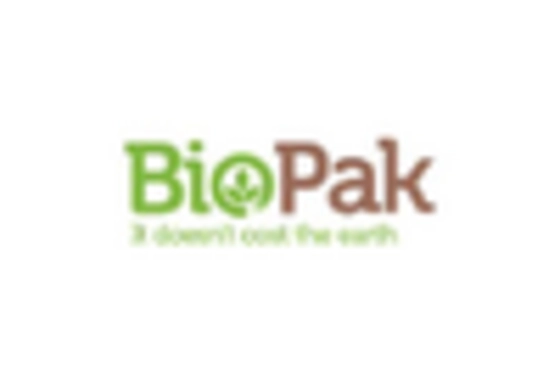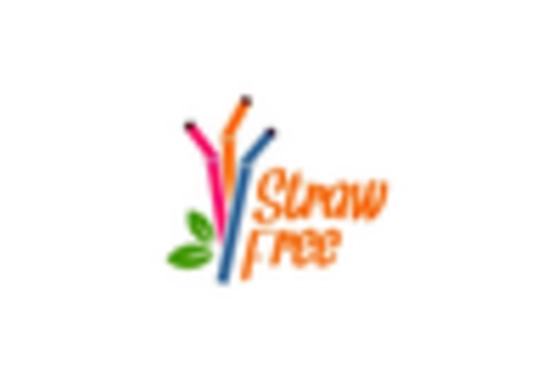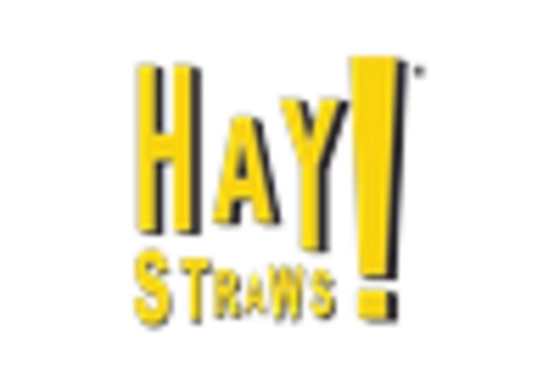Shifts in Consumer Behavior
The evolving preferences and behaviors of consumers are significantly shaping the Eco-Friendly Straws Market. A noticeable shift towards sustainable living has led to increased demand for products that align with eco-conscious values. Market analysis reveals that consumers, particularly millennials and Gen Z, are more inclined to choose brands that offer environmentally friendly options. This demographic is driving the trend towards reusable and biodegradable straws, as they seek to minimize their ecological footprint. Additionally, social media plays a crucial role in amplifying awareness and promoting eco-friendly products, further influencing purchasing decisions. As consumer behavior continues to evolve, the Eco-Friendly Straws Market is expected to adapt, offering innovative solutions that cater to the growing demand for sustainability.
Rising Environmental Concerns
The increasing awareness of environmental issues among consumers appears to be a primary driver for the Eco-Friendly Straws Market. As individuals become more conscious of the detrimental effects of plastic waste on ecosystems, the demand for sustainable alternatives has surged. Reports indicate that approximately 1 million plastic straws are used every day, contributing significantly to ocean pollution. This growing concern has prompted consumers to seek eco-friendly options, thereby propelling the market for biodegradable and reusable straws. Companies within the Eco-Friendly Straws Market are responding by innovating and expanding their product lines to include materials such as bamboo, paper, and stainless steel, which are perceived as more sustainable. This shift not only aligns with consumer preferences but also enhances brand loyalty, as environmentally conscious consumers are more likely to support businesses that prioritize sustainability.
Legislative and Regulatory Changes
Legislative measures aimed at reducing plastic waste are significantly influencing the Eco-Friendly Straws Market. Various regions have implemented bans or restrictions on single-use plastics, including straws, which has created a favorable environment for eco-friendly alternatives. For instance, certain jurisdictions have enacted laws that mandate the use of biodegradable or compostable straws in food service establishments. This regulatory push is expected to drive the growth of the Eco-Friendly Straws Market as businesses seek compliant solutions. Market data suggests that regions with stringent regulations are witnessing a faster adoption of eco-friendly straws, as companies strive to meet legal requirements while appealing to environmentally conscious consumers. Consequently, the interplay between legislation and market dynamics is likely to shape the future landscape of the eco-friendly straw sector.
Technological Advancements in Materials
Technological innovations in materials science are playing a pivotal role in the evolution of the Eco-Friendly Straws Market. Advances in biodegradable materials, such as PLA (polylactic acid) and other plant-based polymers, are enabling manufacturers to produce straws that decompose more efficiently than traditional plastics. This innovation not only addresses environmental concerns but also enhances the functionality and appeal of eco-friendly straws. Furthermore, research indicates that the market for biodegradable materials is projected to grow significantly, suggesting a robust future for eco-friendly straws. As manufacturers continue to invest in research and development, the Eco-Friendly Straws Market is likely to benefit from improved product offerings that meet consumer demands for sustainability without compromising on quality or usability.
Corporate Responsibility and Brand Image
In the contemporary business landscape, corporate responsibility has emerged as a crucial factor influencing the Eco-Friendly Straws Market. Companies are increasingly recognizing that adopting sustainable practices can enhance their brand image and appeal to a broader customer base. A survey indicated that over 70% of consumers prefer brands that demonstrate a commitment to environmental sustainability. As a result, many businesses are integrating eco-friendly straws into their operations, not only to comply with regulations but also to resonate with their target audience. This trend is particularly evident in the food and beverage sector, where restaurants and cafes are replacing traditional plastic straws with eco-friendly alternatives. By doing so, these establishments not only contribute to environmental preservation but also differentiate themselves in a competitive market, potentially leading to increased customer loyalty and sales.


















Leave a Comment